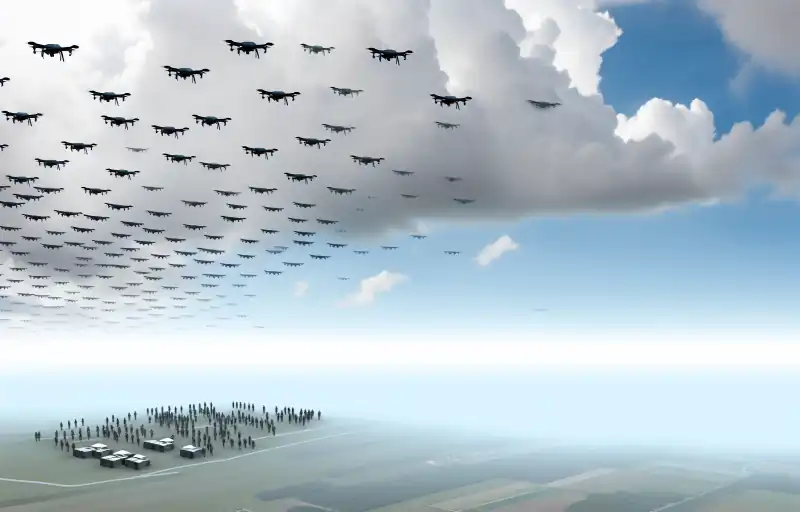
“Unleashing the Swarm: US Military’s Drone Strategy to Defend Taiwan”
US Military’s Drone Swarm Strategy for Taiwan Defense Against China
It has become conventional wisdom among the halls of the United States government that China will launch a full-scale invasion of Taiwan within the next few years. And when that happens, the US military has a relatively straightforward response in mind: Unleash hell. Speaking to The Washington Post on the sidelines of the International Institute for Strategic Studies’ annual Shangri-La Dialogue in June, US Indo-Pacific Command chief Navy Admiral Samuel Paparo colorfully described the US military’s contingency plan for a Chinese invasion of Taiwan as flooding the narrow Taiwan Strait between the two countries with swarms of thousands upon thousands of drones, by land, sea, and air, to delay a Chinese attack enough for the US and its allies to muster additional military assets in the region. Wired,com
The strategy hinges on the rapid deployment of unmanned aerial vehicles (UAVs), underwater drones, and surface drones to create a formidable barrier against Chinese forces. This approach is designed to buy crucial time, allowing the US and its allies to mobilize and respond effectively. The sheer scale of this drone swarm is intended to overwhelm Chinese defenses and complicate their operational plans, thereby creating a significant tactical advantage for Taiwan and its allies.
However, this plan is not without its challenges. The logistics of deploying such a vast number of drones in a short period are daunting. Each drone must be equipped with advanced navigation systems, communication links, and potentially even offensive capabilities. Coordinating these elements in real-time would require sophisticated command and control infrastructure, which itself could become a target for Chinese cyber-attacks or electronic warfare measures.
Moreover, there are concerns about the potential for escalation. The use of drones in such large numbers could be perceived by China as a significant provocation, potentially leading to broader conflict. The international community remains divided on how best to address the Taiwan issue, with some advocating for diplomatic solutions while others support more robust military deterrence.
In addition to these strategic considerations, there are also ethical questions surrounding the use of autonomous systems in warfare. The deployment of drones raises issues about accountability and the potential for unintended civilian casualties. As these technologies become more advanced, the line between human decision-making and machine autonomy continues to blur, complicating the moral landscape of modern warfare.
Despite these concerns, proponents of the drone swarm strategy argue that it represents a necessary evolution in military tactics. Traditional methods of defense may not be sufficient against a technologically advanced adversary like China. By leveraging cutting-edge technology, the US aims to maintain a strategic edge and deter aggression in one of the world’s most volatile regions.
As tensions continue to rise in the Indo-Pacific, the stakes could not be higher. Taiwan’s strategic importance cannot be overstated; it serves as a critical node in global supply chains and holds significant geopolitical value. A conflict over Taiwan would have far-reaching implications, not just for regional stability but for global security as well.
While the US military’s drone swarm strategy for defending Taiwan against a potential Chinese invasion is ambitious and innovative, it is fraught with complexities and risks. The success of this plan will depend on meticulous preparation, international cooperation, and perhaps most importantly, a careful balancing act between deterrence and diplomacy. As both nations continue to prepare for what many see as an inevitable confrontation, the world watches with bated breath, hoping that cooler heads will prevail and that war can be averted through peaceful means.














